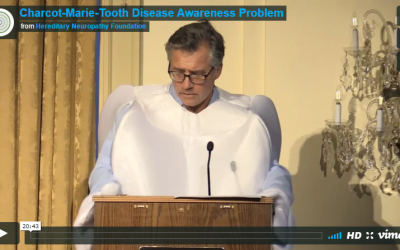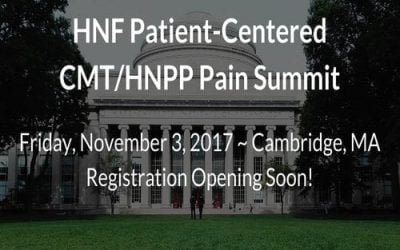Prevention
One of the ways that some CMT patients first become aware of their disease is when they are given a drug treatment for another disease. This is termed chemotherapy-induced neurotoxicity. Drugs such as paclitaxel and the vinca alkaloids that are widely used in cancer treatment cause severe peripheral neuropathy and in some patients this exacerbates CMT, revealing it perhaps for the first time. Researchers from the Johns Hopkins School of Medicine (http://www.ncbi.nlm.nih.gov/pubmed/?term=ethoxyquin +prevents) have published on how a synthetic antioxidant called ethoxyquin which was approved by the FDA 50 years ago, appears to protect against neurotoxicity in both cells and in animal studies. This treatment did not appear to impact the chemotherapy and also seemed to modulate a protein called heat shock protein 90. This work paves the way for further studies of the neuroprotective ability of this compound and possibly clinical trials for patients with preexisting CMT that need to undergo chemotherapy and for which there are few options. Ethoxyquin as a method of preventing neurotoxicity could spark interest in the search for other drugs that act similarly.
Diagnosis
Accurate diagnosis of CMT is important if we are to identify patients for future clinical trials with treatments for the disease. Currently a tiered approach to genetic testing is used and recommended by clinicians and relies on nerve conduction velocity assessment, disease inheritance pattern and population frequency. The previously recommended multi-tiered decision algorithm is laborious. A recent study by Quest Diagnostics and Baylor College of Medicine (http://onlinelibrary.wiley.com/doi/10.1002/mgg3.106/pdf) has evaluated over 17,000 patients using a variety of gene testing methods. The scale of this study is at least 10 times larger than previous analyses. It showed that 78.6 of those tested were positive for copy number variations of PMP22. The genes GJB1, MPZ and MFN2 were present in 6.7, 5.3% and 4.3%, respectively. So nearly 95% of the patients had mutations in just 4 genes. This represents an opportunity for changing the algorithm for CMT diagnosis such that initially it focuses on testing just these 4 genes.
Treatment
Two recent papers provide some encouraging news in the quest for treatments for CMT1A. A group at the Max Planck Institute of Experimental Medicine in Gottingen, Germany recently described how the CMT1A rat model (in early postnatal development) could be treated with a recombinant human growth factor called neuregulin-1 (http://www.nature.com/nm/journal/v20/n9/full/nm.3664.html). This appears to activate a signaling pathway and is able to improve the differentiation of Schwann cells in CMT1A. However it was found to be less effective in treating older animals. It does open the door for using
compounds that modify signaling pathways and the kinases involved. A second paper by a group at the NIH (http://pubs.acs.org/doi/abs/10.1021/cb5005492) used genome editing to create an assay for high
throughput screening to expand the targets for drug discovery in CMT1A. The result of this work was the identification of the protein kinase C modulator bryostatin which lowers PMP22 expression. Interestingly this compound was not identified in previous screens by the group which had delivered the proteasome inhibitors such as Borteozomib. In summary, independently two groups have focused in on the role of kinases in pathways that control PMP22. This may open the door for a broader consideration of the many compounds already available that modulate different kinases.









0 Comments